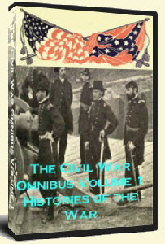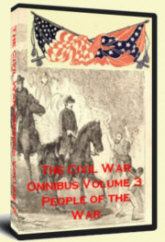“It’s all a damned mess! And our two armies ain’t nothing but howling mobs!”
– A captured Confederate private gave this description of the Battle of the Wilderness in 1864.
By 1864 it was clear that General Robert E. Lee and his Army of Northern Virginia were a major obstacle that stood between the Union and the Confederacy. While the war was beginning to turn in the Union’s favor on other fronts, Lee and his men had held fast, consistently emerging victorious even when vastly outnumbered by a larger, better supplied Union Army.
Union General Ulysses S. Grant recognized that in order to defeat the Confederacy, he’d have to go through Lee and Northern Virginia. In the spring of 1864, Grant undertook the Overland Campaign, a campaign intended to decimate Lee’s Army of Northern Virginia, and eventually take the Confederate capitol of Richmond.
The first battle of the Overland Campaign was the Battle of the Wilderness, a bloody battle that would result in many casualties but end in a draw, with neither the Union nor the Confederacy emerging victorious. However, Grant did not consider the battle a complete loss; the Battle of the Wilderness may have resulted in a draw, but it began the war of attrition against the Army of Northern Virginia that Grant had intended to wage with the Overland Campaign.
The territory around the site of the Battle of the Wilderness was well-traveled. Confederate and Union troops had met there on several occasions, including a year earlier at the Battle of Chancellorsville.
Grant never intended to meet the Army of Northern Virginia in the scrubby terrain of Spotsylvania and Orange Counties in north central Virginia. Lee, on the other hand, never intended to fight anywhere but the wilderness. Knowing that his outnumbered men would have a better chance against the larger and better supplied Union men, Lee took advantage of the thick undergrowth and and dense tree lines of this area to protect his men.
Staking their claim to the wilderness, Lee led his men in one of the most bewildering battles of the war May 5-7, 1864. For two days, the Army of Northern Virginia fought off advances from the Army of the Potomac despite being outnumbered more than two to one. Much of the battle was hand to hand combat, as the wild terrain did not accommodate artillery fire.
Just when it seemed that the Confederates would finally be defeated, James Longstreet finally arrived to reinforce the men, eventually regaining all the ground that the Confederates had lost to Union General Winfield Scott Hancock, and even advancing on the Union troops.
But Longstreet’s rescue came with a price; in a repeat of the injury that had led to General Thomas J. “Stonewall” Jackson’s death, as fighting wound down, Longstreet was accidentally shot by his own men. The bullet did such extensive damage that Longstreet’s arm was paralyzed for some time, and he spent over seven months recuperating. His loss was keenly felt by Lee, who was still lamenting the loss of Jackson.
Longstreet was far from the only man to fall to bizarre circumstances during the Battle of the Wilderness. At one point, a brush fire broke out between the Union and Confederate lines. Hundreds of wounded soldiers who still lay in the line burned to death, their screams echoing in the night while their comrades attempted to put the fire out.
After three days, with no clear victor emerging, the Army of the Potomac simply walked away from the Battle of the Wilderness, following Grant’s orders to advance on Richmond.
The price of the inconclusive Battle of the Wilderness was steep. Of the approximately 100,000 Union soldiers who converged upon the battlefield, between 15,000 and 18,000 were casualties. The outnumbered Confederates fared slightly better, at least on paper; of the 61,000-some men they brought to the battle, between 7,000 and 10,000 were casualties. However, Lee understood exactly what Grant did – with the Confederate numbers shrinking daily, any loss was too much.
The Battle of the Wilderness began Grant’s Overland Campaign with a bloody battle from which no one emerged victorious. The battle was the beginning of the campaign that would eventually wear down the Army of Northern Virginia, a campaign that Grant recognized was the only way to defeat Lee and bring the Confederacy back into the Union.


